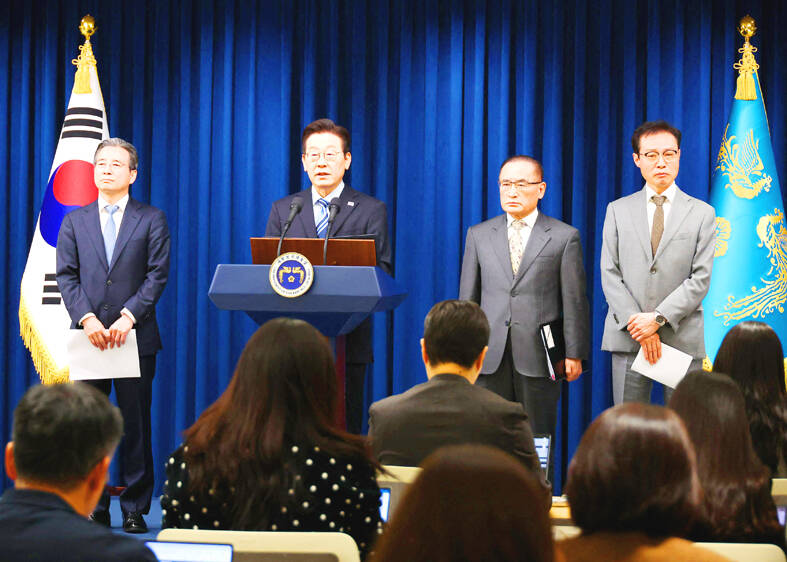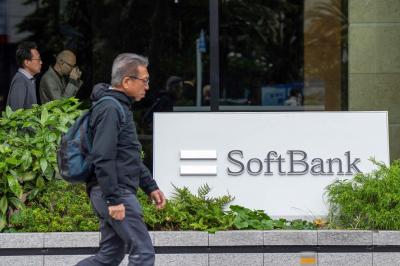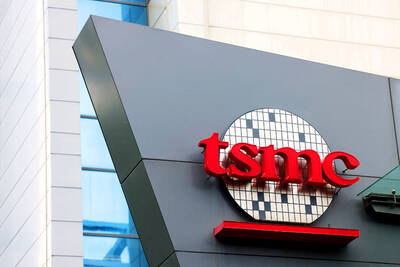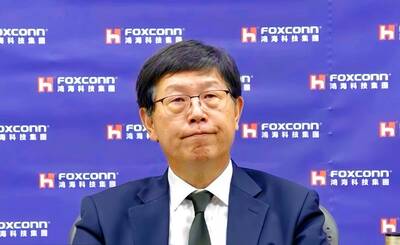The US and South Korea yesterday released details of a trade agreement that includes a US$150 billion South Korean investment in the shipbuilding sector in the US and an additional US$200 billion earmarked for industrial sectors, the two countries said.
The joint announcement followed a meeting last month between South Korean President Lee Jae-myung and US President Donald Trump, during which they agreed to a deal that would cut US import duties on South Korea’s products to 15 percent from 25 percent.
“Finally, the South Korea-US trade, commerce and security negotiations, which were among the biggest variables affecting our economy and security, are ... concluded,” Lee said yesterday. “Good competition requires excellent partners and I believe President Trump’s rational decision played a significant role in achieving meaningful agreement.”

Photo: AFP
South Korean Minister of Trade and Industry Kim Jung-kwan and US Secretary of Commerce Howard Lutnick signed a memorandum of understanding, a 27-point non-binding document on strategic investments.
The document lays out a schedule for implementation of projects that would be selected by the US president after consultations with South Korea, and Seoul is required to transfer funds within 45 days of the decisions.
The announcement of the trade deal caps more than three months of wrangling over Trump’s tariffs that have targeted trading partners around the world. South Korea was alarmed by the prospect of crushing duties on key exports such as semiconductors and autos.
Under the agreement, Lee said that South Korea would form a new partnership with the US on shipbuilding, artificial intelligence and the nuclear industry, helping its ally “rebuild crucial industries, just as the US helped South Korea in the past.”
A fact sheet released by the White House said that the US gave approval for South Korea to build nuclear-powered submarines and would work closely with Seoul to find “avenues to source fuel.”
Washington also accepted South Korea’s request that US$200 billion in cash investments would come in installments no larger than US$20 billion a year in an effort to keep the won stable.
The fact sheet said the countries agreed that South Korea’s investments should not “give rise to market instability.”
If signs of instability appeared, South Korea could seek an “adjustment in the amount and timing of the funding, and the United States will, in good faith, give due consideration to such request,” it said.
The US would cut tariffs on South Korean products including autos to 15 percent from 25 percent.
Semiconductors would be subject to tariff terms no less favorable than those for Taiwan, a presidential adviser said.
The agreement with Washington showed that Lee made inroads on major security and energy initiatives by paving the way to build nuclear-powered submarines and expanding its nuclear energy capabilities.
Lee’s national security adviser said that the countries had discussed the issue of nuclear-powered submarines on the “premise” that the vessels would be built in South Korea.
Trump previously said that the submarines would be built in a South Korean-owned shipyard in Philadelphia.
Under the deal, the US pledged to cooperate on finding a way for South Korea to enrich uranium and reprocess spent nuclear fuel.
Analysts said that it was too early to say whether South Korea got a better deal than Europe and Japan.
Kim Dong-yup, a former South Korean navy officer at Kyungnam University in Changwon-si, said that the agreement on nuclear energy and security meant Seoul had to pay much more for defense, but Lee was faced “with an inevitable choice.”

Japanese technology giant Softbank Group Corp said Tuesday it has sold its stake in Nvidia Corp, raising US$5.8 billion to pour into other investments. It also reported its profit nearly tripled in the first half of this fiscal year from a year earlier. Tokyo-based Softbank said it sold the stake in Silicon Vally-based Nvidia last month, a move that reflects its shift in focus to OpenAI, owner of the artificial intelligence (AI) chatbot ChatGPT. Softbank reported its profit in the April-to-September period soared to about 2.5 trillion yen (about US$13 billion). Its sales for the six month period rose 7.7 percent year-on-year

CRESTING WAVE: Companies are still buying in, but the shivers in the market could be the first signs that the AI wave has peaked and the collapse is upon the world Taiwan Semiconductor Manufacturing Co (TSMC, 台積電) yesterday reported a new monthly record of NT$367.47 billion (US$11.85 billion) in consolidated sales for last month thanks to global demand for artificial intelligence (AI) applications. Last month’s figure represented 16.9 percent annual growth, the slowest pace since February last year. On a monthly basis, sales rose 11 percent. Cumulative sales in the first 10 months of the year grew 33.8 percent year-on-year to NT$3.13 trillion, a record for the same period in the company’s history. However, the slowing growth in monthly sales last month highlights uncertainty over the sustainability of the AI boom even as

AI BOOST: Next year, the cloud and networking product business is expected to remain a key revenue pillar for the company, Hon Hai chairman Young Liu said Manufacturing giant Hon Hai Precision Industry Co (鴻海精密) yesterday posted its best third-quarter profit in the company’s history, backed by strong demand for artificial intelligence (AI) servers. Net profit expanded 17 percent annually to NT$57.67 billion (US$1.86 billion) from NT$44.36 billion, the company said. On a quarterly basis, net profit soared 30 percent from NT$44.36 billion, it said. Hon Hai, which is Apple Inc’s primary iPhone assembler and makes servers powered by Nvidia Corp’s AI accelerators, said earnings per share expanded to NT$4.15 from NT$3.55 a year earlier and NT$3.19 in the second quarter. Gross margin improved to 6.35 percent,

FAULTs BELOW: Asia is particularly susceptible to anything unfortunate happening to the AI industry, with tech companies hugely responsible for its market strength The sudden slump in Asia’s technology shares last week has jolted investors, serving as a stark reminder that the world-beating rally in artificial intelligence (AI) and semiconductor stocks might be nearing a short-term crest. The region’s sharpest decline since April — triggered by a tech-led sell-off on Wall Street — has refocused attention on cracks beneath the surface: the rally’s narrow breadth, heavy reliance on retail traders, and growing uncertainty around the timing of US Federal Reserve interest-rate cuts. Last week’s “sell-off is a reminder that Asia’s market structure is just more vulnerable,” Saxo Markets chief investment strategist Charu Chanana said in